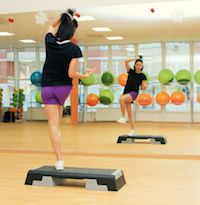Women with Fibromyalgia Need to Get Moving Here's Why
While maintaining high levels of physical activity may not appeal to many patients with fibromyalgia (FM), doing so may be the best way to help ease their pain.

While maintaining high levels of physical activity may not appeal to many patients with fibromyalgia (FM), doing so may be the best way to help ease their pain.
Presented at the 34th Annual American Pain Society Scientific Meeting in Palm Springs, CA, a study from The University of Iowa revealed that women with fibromylagia experience less pain when their physical activity levels are higher. Lead author Ericka Merriwether, PhD, a postdoctoral research scholar in the Neurobiology of Pain Laboratory, and colleagues analyzed data collected during a multiple-method observational study.
“Exercise has an analgesic effect over time,” Merriwether told MD Magazine. “It may a hurt a little bit, or even a lot, in the beginning, but once you get past that threshold it has an analgesic effect.”
Since exercise has been associated with a decrease in pain for quite some time — due to the reduction in central excitability and enhanced central inhibition – the team worked to find specific causes for this phenomenon among women. The 85 female participants with fibromyalgia, ranging in age from 18 to 70 (average age 49.9), filled out questionnaires regarding the pain intensity and interference in their everyday lives.
The subjects also wore an accelerometer for 7 to 10 days. “It’s tracking where and how you move your limbs at any given time or place, or not,” Merriwether said.
Based on the results from the device, patients were put into one of the following categories:
- Sedentary (SED) = less than 5,000 steps per day
- Moderate (MOD) = between 5,000 and 9,999 steps per day
- Vigorous (VIG) = more than 10,000 steps per day
“Women with fibromyalgia who are highly active (VIG) report lower pain intensity and low pain severity than moderately active (MOD) or physically inactive (SED) women,” the authors wrote.
Merriwether explained that the VIG group also had a higher tolerance for pain. This suggests that not only do more physically active women experience less pain from day to day, but when it does occur they are able to tolerate it better.
Although physical activity seemed to be a fair determinate for pain intensity, it did not appear to impact all situations.
“The amount of physical activity does not impact how patients view their pain, interestingly enough,” Merriwether confirmed.
The data addressing psychological pain outcomes showed that all 3 groups had nearly the same results when reporting how fibromyalgia pain affects their quality of life. This proved that regardless of the number of steps the women took, they all had similar outlooks on fear and pain catastrophizing.
Even though it may not be the “quick fix” that some patients look for in treatment, exercise may be the way to go for patients with fibromyalgia. “These are preliminary results, but we want to push physical activity,” Merriwether concluded.